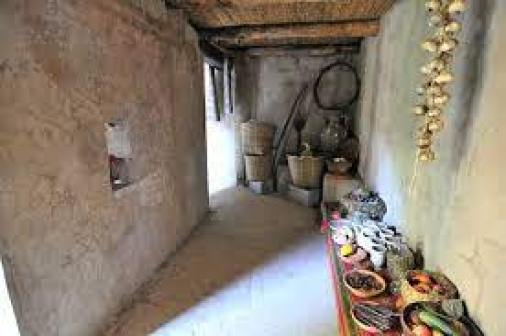Heavy or uncontrollable bleeding the KJV translates the underlying Hebrew and Greek terms as “issue of blood” (Lev 12:7; Matt 9:20) or “fountain of blood” (Mark 5:29). Modern translations render these terms as hemorrhage, flow, or discharge of blood, Mosaic law said any discharge of blood, whether associated with the birthing process (Lev 12:7), with menstruation (Lev 15:19), or continued bleeding (Lev 15:25; Matt 9:20) rendered a woman unclean.
Continue reading DEFINITION OF THE DAY (HEMORRHAGE)Tag Archives: greek
DEFINITION OF THE DAY (INN)
Different kinds of shelters or dwellings. In the OT the Hebrew word translated “inn” or “lodging place” might refer to a camping place for an individual (Jer 9:2), a family on a journey (Exod 4:24), an entire caravan (Gen 42:27; 43:21), or an army (Josh 4:3,8). In these passages (with the possible exception of the reference in Jeremiah) the presence of a building is not implied. Often the reference is only to a convenient piece of ground near a spring. It is doubtful that inns in the sense of public inns with a building existed in OT times.
Continue reading DEFINITION OF THE DAY (INN)A LITTLE KNOWN FACT ABOUT (HEROD AGRIPPA I)
The grandson of Herod the Great, Herod Agrippa is best known for being the first to execute one of Jesus’ disciples. “He had the apostle James (John’s brother) killed with a sword. When Herod saw much this pleased the Jewish leaders, he arrested Peter” (Acts 12:2-3). An angel freed Peter.
Continue reading A LITTLE KNOWN FACT ABOUT (HEROD AGRIPPA I)DEMONS IN THE OLD TESTAMENT
Little is known about the Israelite view of malevolent spirits, popularly called “demons” in contemporary usage. In contemporary usage. In addition to the Hebrew word shed, translate “false gods” in Ps 106:37, the OT has a Hebrew word sair, translated in the NIV as “goat idols” (Lev 17:7: 2 Chron 11:15: see the NIV text note on Lev 17:7). Some suggest that the use of sair also refers to demons in Isa 13:21; 34:14 (NIV “wild goats). This Hebrew word refers to an actual goat in Gen 37:31 and frequently in texts prescribing a goat for sacrifice (e.g., Lev 4:23; Nu 7:16).
Continue reading DEMONS IN THE OLD TESTAMENTDEFINITION OF THE DAY (LEPROSY)
Generic term applied to a variety of skin disorders from psoriasis to true leprosy. Its symptoms ranged from white patches on the skin to running sores to the loss of digits on the fingers and toes.
Continue reading DEFINITION OF THE DAY (LEPROSY)WHERE ECCLESIATES GETS ITS NAME?
If we gave this book an English title, it might be “The Teaching.”
Continue reading WHERE ECCLESIATES GETS ITS NAME?EVERYDAY LIFE IN BIBLE TIMES (TRAP/SNARE PT 2 OF 3)
All these trapping mechanisms are mentioned by the biblical authors in figures of speech. Because these devices are often referenced with the same Hebrew or Greek term, we look to the larger context, which may be helpful in determining exactly which type of trapping device is
Continue reading EVERYDAY LIFE IN BIBLE TIMES (TRAP/SNARE PT 2 OF 3)EVERYDAY LIFE IN BIBLE TIMES (FLOG,WHIP,SCOURAGE)
Flogging was a form of punishment that employed a variety of devices to lash the exposed flesh of the victim. The biblical authors describe this grisly business with a variety of Greek and Hebrew terms, each of which has been translated in our English versions in more than one way. That makes this phenomenon a bit more difficult to trace through the pages of our Bible. But we will get the basics by tracing the terms flogging, whipping, and scourging.
Continue reading EVERYDAY LIFE IN BIBLE TIMES (FLOG,WHIP,SCOURAGE)WOMEN OF THE BIBLE (PHOEBE “WOMAN OF IMPACT”)
The apostle Paul’s letter to the Romans is widely regarded as his magnum opus. He began with eleven chapters that are deeply theological, essentially answering the question, “What does the gospel of Jesus really mean?” Then Paul wrote four more chapters that are decidedly practical, answering the question, “What differences does the gospel make in the believer’s life?
Continue reading WOMEN OF THE BIBLE (PHOEBE “WOMAN OF IMPACT”)DEFINITION OF DAY (SIN PT 1 OF 2)
THE NEW TESTAMENT PERSPECTIVE ON SIN: The NT picture is much like that of the OT. Several of the words used for sin in the NT have almost the same meaning as some of the Hebrew words used in the OT. The most notable advancement in the NT view of sin is the fact that sin is defined against the backdrop of Jesus as the standard for righteousness. His life exemplifies perfection. The exalted purity of His life creates the norm for judging what is sinful. In the NT sin also is viewed as a lack of fellowship with God. The ideal life is one of fellowship with God. Anything that disturbs or distorts this fellowship is sin. The NT view of sin is
Continue reading DEFINITION OF DAY (SIN PT 1 OF 2)








